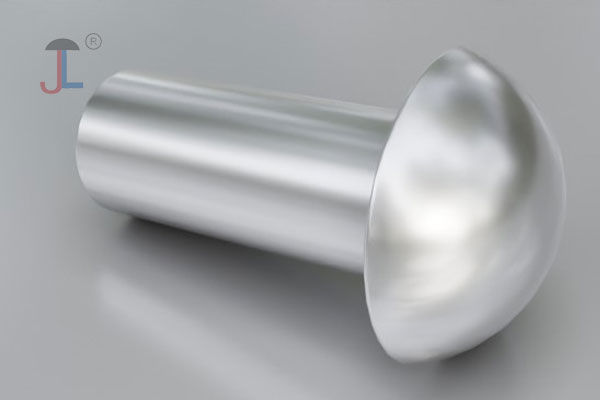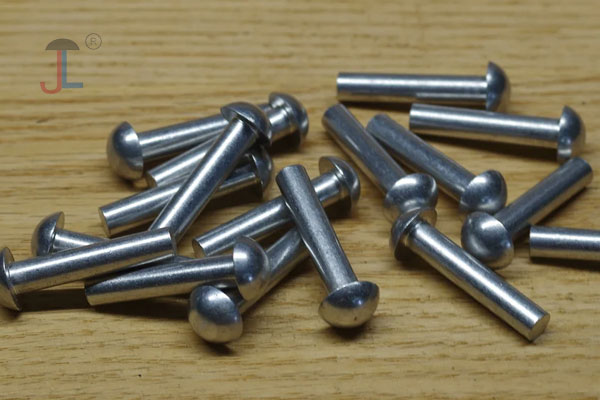To install round head solid rivets, follow these detailed steps:
-
Prepare the Materials and Tools
-
Drill holes in the materials to be joined, ensuring the hole diameter matches the rivet shaft size.
-
Gather tools such as a hammer or mallet, a rivet setting tool or bucking bar, a rivet anvil (a hard surface with a dimple for the rivet head), and optionally a rivet press or pneumatic rivet gun for easier installation.
-
-
Create a Dimple for the Rivet Head (Optional but Recommended for Round Heads)
-
Use progressively sized drill bits to create a round-bottomed dimple on the surface where the rivet head will sit. This helps preserve the round shape of the rivet head when setting it.
-
-
Insert the Rivet
-
Align the two pieces to be joined and push the rivet shaft through the pre-drilled holes from the side where you want the finished round head to appear.
-
Make sure there are no burrs or debris under the rivet head or between the materials.
-
-
Cut the Rivet Shaft to Length
-
Hold the pieces tightly together and cut the rivet shaft so that about 1/16 inch (approximately 1.5 mm) protrudes beyond the back surface. If cut too short, replace the rivet and try again.
-
-
Set the Rivet
-
Place the rivet head into the dimple on the rivet anvil (head side down on the flat side of the anvil).
-
Position the bucking bar or rivet setting tool on the protruding rivet shaft end.
-
Using a hammer or mallet, strike the rivet shaft end to mushroom it out and form a second head, securing the materials tightly together. Continue hammering until the rivet shaft is flush and the mushroomed end is uniform and even around the circumference.
-
If using a rivet setting tool, align the concave end of the tool on the rivet and strike with a hammer repeatedly until set.
-
-
Alternative Installation Methods
-
For larger or steel rivets, heating the rivet red hot before installation can help in forming the mushroomed end more easily.
-
Pneumatic rivet tools or rivet presses can simplify the process, especially for multiple rivets, by providing consistent impact force.
-
-
Final Inspection
-
Ensure the rivet heads are smooth, round, and flush with the material surfaces.
-
The joint should be tight with no movement between the materials.
-
This method ensures a strong, durable joint with a neat round head finish on the rivet. Using the right tools like a rivet anvil with a dimple and a bucking bar or rivet setter is key to a professional result.


